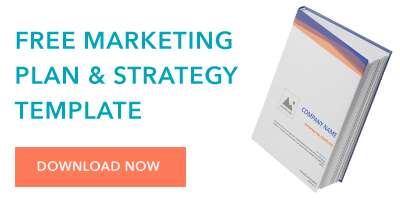What is traditional media?
Traditional media — also referred to as legacy media — is any form of media that exists offline, such as television, radio, newspapers, magazines, mail, or billboards. It’s considered “traditional” because it’s been around for decades — it existed long before the rise of digital media.
From watching TV ads to flipping through paper mail to walking through Times Square, traditional media is everywhere. At a high level, if it’s not on the internet, it’s legacy media.
Pros and Cons of Traditional Media
Pros of Traditional Media
Each form of traditional media has its unique advantages. Let’s circle back to Times Square — advertising in this world-renowned location certainly increases brand awareness. But, it also elevates brand prestige which lends more credibility and trustworthiness for the business.
Print media (e.g. newspapers and mail) helps consumers “touch and feel” the brand, bringing it to life. Perfume companies, for instance, can slip samples into direct mail and move those interested in the fragrance closer to purchase.
Traditional media can also help businesses target their audience through segmentation. A business offering financial services should work with finance newspapers or radio stations to reach their best audience. Meanwhile, a business in the beauty space may lean towards using beauty magazines or relevant TV channels.
Cons of Traditional Media
On the flip side, traditional media can also come at a much higher price tag when compared to digital media. Statista found the CPM (cost per thousand) for TV advertising in the U.S. to be $36.19 for the 2019/2020 season — meaning, it costs the advertiser $36.19 to reach every 1000 viewers. This is significant compared to advertising on a digital media platform such as Facebook, where the average CPM for 2020 has been $9.09, calculated from Revealbot’s 2020 monthly CPM report.
Legacy media also limits interactions between viewers and the business. A TV ad can intrigue viewers, but it lacks opportunity for engagement. Meanwhile, new media (like Facebook ads) gives viewers the option to comment, share, and react. These engagement actions pull in the audience further while also providing instant feedback for the business.
Finally, metrics in traditional media are arguably more challenging to measure. In digital media, analytics tools make it simple to track impressions, clicks, and view time — many of the tools do so automatically for you. Without a digital platform, traditional media comes with fewer metrics and the data can’t be accessed instantly.
When to Shift to an Inbound Strategy
Traditional media tends to interrupt audiences with unexpected content, making it a form of outbound marketing. Inbound marketing, on the other hand, is a marketing methodology that focuses on attracting customers by creating meaningful content tailored to them.
An example of inbound marketing is this blog post you’re reading right now! This post was crafted to answer your questions about legacy media and inbound strategy, and you likely found it after you searched for the keyword on Google or another search engine. In other words, the blog post didn’t pop up on your screen as an ad, interrupting whatever it is you were doing.
However, traditional outbound marketing and inbound marketing can co-exist. HubSpot’s CEO Brian Halligan believes marketers should spend 90% of their efforts on inbound marketing and 10% on outbound marketing. So, step back and evaluate which methodology currently dominates your marketing strategy.
If traditional media is taking up more efforts in your current strategy, below are some tips to help you ease into an inbound strategy.
How to Shift to an Inbound Strategy
1. Become fluent in inbound marketing.
Before you make the shift, start off on the right foot by learning exactly what goes into inbound marketing. HubSpot Academy offers a free comprehensive course on inbound marketing to teach you everything you need to know and set you up for success. The lessons focus on everything from fundamentals to nurturing leads. By the end, you’ll be a pro inbound marketer and feel empowered to build your strategy.
Learning the foundations and key concepts is crucial because you need to apply the knowledge every step of the way from here on out. Time to hit the books!
2. Assess your current data.
For a successful transition, you also need to understand how your current marketing strategy operates to pinpoint what needs to be changed.
Take a look at your sales data, cost per lead, total number of leads, and average time of sales cycle. Assign each metric to its corresponding traditional media form to determine if it’s the most effective use of your budget. The data will show if the investment is worthwhile. If not, determine if the budget should be redistributed to digital media forms, which will play into your inbound strategy. More likely than not, it will be more cost-effective to go digital.
3. Bring all stakeholders on board.
Because marketing affects other parts of your company, it’s important to make sure everyone is on board with an inbound strategy. Make the case for the shift to your leadership team and any other teams marketing closely collaborates with, such as sales.
This is a great opportunity to present your findings from the previous steps. Consider sharing inbound concepts, such as the flywheel model, to accelerate company growth and attract, engage, and delight your customers.
You can also compare and contrast the cost of using traditional media versus inbound marketing tools like search engine optimization (SEO) and social media during discussions with stakeholders.
Having everyone on the same page will reduce friction and allow for smooth sailing.
4. Establish your digital presence.
Your business may already have some sort of digital presence, but now’s the time to polish it to perfection. In order for inbound to work, you need to have a functional and engaging website to attract clients.
On your site, share what you have to offer and which pain points you can relieve for your buyer personas and customers. As mentioned above, blog posts on your website are a great way to draw visitors in while establishing your digital presence, too.
Beyond your website and blog, it’s important to maintain a social media presence. After all, about 75% of the U.S. population use social networks according to Statista. Social media allows you to present your business to customers in an interactive and engaging way so you can forge and maintain relationships with them.
Now, don’t feel like your business needs to have a presence on every social media platform. Instead, choose the platforms that make the most sense for your business.
For example, if your business is B2B, use LinkedIn to tap into its business-savvy audience. If your business is more product-based, Instagram can be a great place to share beautiful pictures of your product. You can also study your buyer personas to learn more about which platforms they use most frequently.
5. Review your marketing budget.
As you transition, it’s inevitable that you'll need to review your budget and reallocate your resources. It’s risky to suddenly switch strategies, so don’t completely cut off ties with legacy media. Instead, slowly phase into the inbound methodology and review your progress as you go along.
Start off by identifying the most inefficient forms of traditional media your business is using. The most inefficient media will have high costs and low returns — meaning, you’re spending more than you’re earning from the media. Then, reassign the budget from low-producing media to a digital counterpart. Be sure to track your results.
6. Choose a marketing automation system.
Marketing automation can help you streamline your workflow by prioritizing and executing marketing tasks on auto-pilot mode. By doing so, you have more time to scale your company’s growth instead of working on repetitive tasks.
HubSpot’s marketing automation software can help you with responsibilities such as automating email campaigns, creating sophisticated and conditional workflows, and managing bulk data. (Here are 11 other marketing automation software tools to consider.)
7. Create editorial calendars and processes.
Now that marketing automation is set, let’s devise your content strategy. With traditional media, that’s usually pre-determined by the channel you work with. A radio station, for example, knows exactly when and where to put your 30-second message. With inbound, the ball is in your court.
Create editorial calendars to stay organized as you produce content for your inbound strategy. Editorial calendars help you assign, plan, track, and publish content.
HubSpot follows editorial calendars for its blog and social media accounts. This is also a great way to document the details for each piece of content, especially if you have multiple content types. If you need more guidance, check out some editorial calendar examples and templates here.
By taking the steps outlined above, you’ll be well on your way to shift your traditional marketing strategy from outbound to inbound. For more, see our marketing plan template below to develop your full inbound marketing strategy and identify the most important goals for your business.
Editor's note: This post was originally published in November, 2014 and has been updated for comprehensiveness.
Originally published Aug 28, 2020 7:00:00 AM, updated May 12 2025
Topics:
Integrated Marketing

